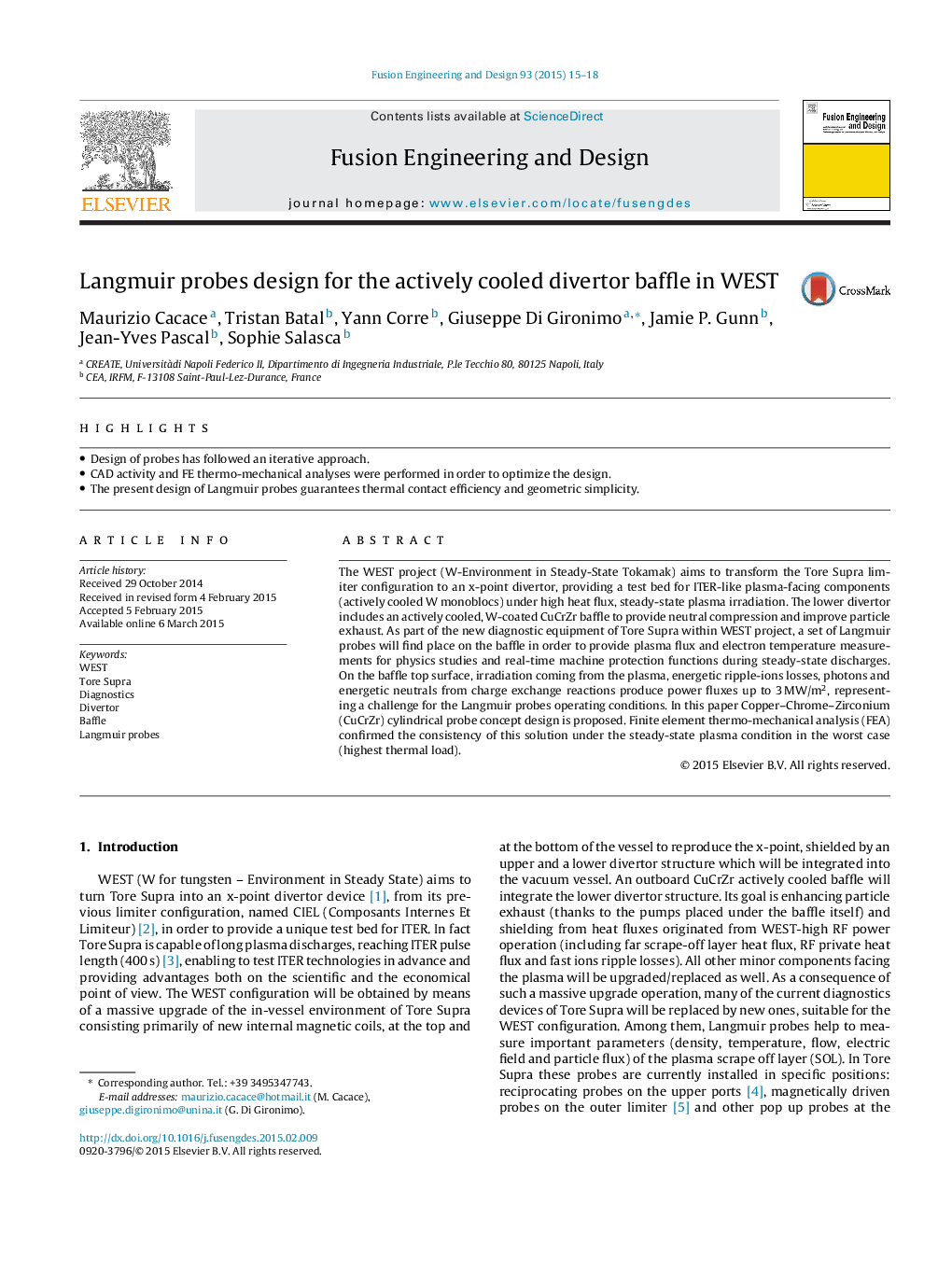| Article ID | Journal | Published Year | Pages | File Type |
|---|---|---|---|---|
| 270981 | Fusion Engineering and Design | 2015 | 4 Pages |
•Design of probes has followed an iterative approach.•CAD activity and FE thermo-mechanical analyses were performed in order to optimize the design.•The present design of Langmuir probes guarantees thermal contact efficiency and geometric simplicity.
The WEST project (W-Environment in Steady-State Tokamak) aims to transform the Tore Supra limiter configuration to an x-point divertor, providing a test bed for ITER-like plasma-facing components (actively cooled W monoblocs) under high heat flux, steady-state plasma irradiation. The lower divertor includes an actively cooled, W-coated CuCrZr baffle to provide neutral compression and improve particle exhaust. As part of the new diagnostic equipment of Tore Supra within WEST project, a set of Langmuir probes will find place on the baffle in order to provide plasma flux and electron temperature measurements for physics studies and real-time machine protection functions during steady-state discharges. On the baffle top surface, irradiation coming from the plasma, energetic ripple-ions losses, photons and energetic neutrals from charge exchange reactions produce power fluxes up to 3 MW/m2, representing a challenge for the Langmuir probes operating conditions. In this paper Copper–Chrome–Zirconium (CuCrZr) cylindrical probe concept design is proposed. Finite element thermo-mechanical analysis (FEA) confirmed the consistency of this solution under the steady-state plasma condition in the worst case (highest thermal load).
